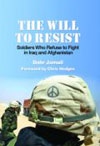U.S. MILITARY IN IRAQ TOSSES DETENTION QUESTIONS TO GATES
By Nick Mottern, Director, ConsumersforPeace.org
Over the last several weeks, the US-operated Multi-National Forces – Iraq (MNF-I) press office has supplied Consumers for Peace.org with answers to questions on detention in Iraq. The information was requested in our continuing study of war crimes in Iraq.
The military press office has been cooperative, forwarding the questions to Task Force 134 (TF-134), the unit responsible for overseeing US detention camps in Iraq, which responded in a timely way. (See Series One below for the questions and TF-134 answers in bold face).
However, on July 29, 2008 I sent the press office a set of follow-up questions that seem to have been too controversial for the US command in Iraq to handle. Key questions asked about, in summary:
- Numbers of detainees held by the Iraqi government, conditions in Iraqi detention facilities and methods of interrogation, access to legal help and family visitations there.
- Numbers of detainees transferred to Iraqi custody by US forces.
- Who decides who will be held in detention and whether detainees have access to judicial process.
- Whether US detention facilities are open to United Nations and human rights groups for inspection.
- What types of interrogation are used by TF-134 interrogation, including whether detainees are confined in boxes, a practice revealed August 8 (see below) and what US agencies involved in interrogation.
- The projected time when the US might discontinue running detention camps based on the current rate of release of detainees.
- The annual cost of running US detention facilities in Iraq and numbers of US personnel involved.
On August 1, I received an email from an MNF-I press officer saying: “I have forwarded your queries to persons ultimately responsible for determining if your questions will be answered by TF-134, and if not, for further clarification on how you should proceed. I have not received further guidance, but I will follow-up.”
On August 2, a Saturday, the MNF-I press officer advised: “ I’ve been instructed to have you contact Ms. Tara Jones with Office of the Secretary of Defense (currently Robert M. Gates). She is copied on this email. Please address your questions and concerns to Ms. Jones.”
After writing a follow-up email to Ms. Jones Sunday, August 3 and with no response on August 4, I called Ms. Jones on August 5. She acknowledged she had seen my email but said she had no idea why MNF-I had directed me to her and that she had not had time to even read the email. She works in the policy office that handles Iraq detention policy, but she said she thought I should talk with CENTCOM and that she would try to find the time before a week-long trip to send me a contact at CENTCOM, the United States Central Command, overseeing military operations in the Middle East. She said she might have time to read the email after she returned from her trip. I asked for an email confirmation of this, but none is forthcoming, and I have received no referral to CENTCOM.
The US has been extraordinarily sensitive about its detention operations in Iraq since the revelations of torture at Abu Gharib prison in 2004. The level of cooperation of the MNF-I press office with respect to the ConsumersforPeace questions is consistent with recent efforts to put a humane face on the imprisonment of Iraqis by US forces. An extensive article on US detention in Iraq in the June 28-29 Financial Times, based on an interview with Major General Douglas Stone, just departed as deputy commander of TF-134, said “Stone’s great innovation…is that the US and its allies must limit indiscriminate killings – and detainee mistreatment – as a matter of public diplomacy rather than principle. This theory is a military doctrine that offers rare common ground for human rights advocates and hard-nosed generals, and it is one that Stone has been working on for a while.”
The same article reports that a UN human rights officer in Baghdad reported US-run detention facilities are “five-star”. The article says that the official said a greater concern was Iraqi prisons “where overcrowding and abuse were the norm for the approximately 25,000 convicts and detainees.” The US has funded the construction and supplying of Iraqi prisons and detention facilities.
Questions about treatment in US detention facilities have been raised most recently by a report August 7 that the US military is putting reportedly violent detainees in “segregation boxes” as small as three feet by three feet by six feet. A TF-134 spokesperson said, according to CNN, that detainees are forced to stand in the boxes “for no more than 12 hours at a time” and that someone checks on the detainee every 15 minutes.
SERIES ONE - QUESTIONS ON DETENTION IN IRAQ
We are forwarding the following questions in connection with a report we are preparing on detentions in Iraq for our website www.ConsumersforPeace.org. Thank you for your assistance.
1. What is the legal authority for U.S. and Iraqi authorities to hold Iraqi citizens in detention? United Nations Security Council Resolution 1723
2. How many Iraqi citizens are currently being held in detention by U.S. forces and by Iraqi forces? What percent of these are combatants? About 21,000
3. How many Iraqi citizens have been held in detention, month by month, since the occupation, with a breakdown of those being held by U.S. and those being held by Iraqi authorities? We cannot retrieve this information in any reasonable amount of time, and we do not track Iraqi detention systems. We can say that we have had around 73,000 detainees in Coalition Forces detention since the occupation.
4. How many Iraqi citizens in total have passed through or are currently in the U.S. detention system; the Iraqi detention system?
We have had around 73,000 detainees in Coalition Forces detention since the occupation. We can not answer for the Iraqi prison system.
5. How many Iraqi citizens are detained daily? How many are released daily? Can you provide statistics showing the trends in daily detentions and release over the last two years? Can you provide statistics showing comparative numbers of those being detained by U.S. forces on a daily basis and those being detained by Iraqi authorities?
Presently, we are taking in about 30 a day, and releasing about 50 a day.
6. Can you provide statistics showing the trends in daily detentions in various population centers or regions of Iraq over the last two years? We currently don’t have statistics showing daily detentions by region, however, we have a monthly breakdown of intakes overall. Numbers are as follows and are approximate numbers: Aug 07 – 1750; Sep 07 – 1740; Oct 07 – 1610; Nov 07 – 1190; Dec 07 – 970; Jan 08 – 870; Feb 08 – 840; Mar 08 – 985; Apr 08 – 800; May 08 – 935; Jun 08 – 955.
7. How many of the Iraqi citizens in detention by U.S. authorities are women; how many are children? We hold around 10 women, and about 350 Juveniles
8. How many of those in detention by Iraqi authorities are women; how many are children? We do not have information on the Iraqi Prison System
9. A June 9, 2008 article in American Forces Press Service reported that Marine Corps Major General Douglas M. Stone, former deputy commander of detention operations for the Multinational Force Iraq said that detainees are separated into two groups: hard-core extremists and more moderate members of the detention population.
a. Who makes the determination on whether a person is a hard-core extremist versus more moderate, and how is that determination made? During in processing and the course of a detainees stay, we have assessment teams (religious clerics, social service workers, etc.) that will make assessments of detainee temperaments.
b. Of those currently being held in detention, how many being held by U.S. authorities are in the hard-core category? How many of those being held by Iraqi authorities are in the hard-core category? We have around 4500 identified extremists in US detention.
c. How many in the hard-core category are women; how many are children? How many of these are held by U.S. and how many by Iraqi authorities? We do not openly provide information on the categories of our women and children detainees to the public for their own security.
d. How long are those considered to be hard-core extremists held on average, compared to those who are more moderate? All detainees are held until they are no longer considered a threat to security in Iraq. The “hard-core” detainees, which we call “irreconcilables” fall into the same detention criteria as the moderate detainees, so they will be held until they excibit that they will no longer be an imperative threat to security. Currently the average length of stay for ALL detainees is 330 days.
e. What are the physical living conditions of those considered to be hard-core extremists versus the living conditions of those considered to be moderates in terms of: cell size, numbers of persons per cell; solitary confinement; types and amounts of food; access to exercise; access to television, books, radio; access to health care; access to visitors? The living conditions for both extremist and moderate detainees are the same. Both are afforded access to visitors, entertainment mediums such as books and television, health care, food and exercise.
f. Please list the U.S. and Iraqi detentions facilities by location and the numbers of people being detained there with a breakdown of those considered hard-core versus moderate. Again, we can not answer for the Iraqi prison system. Camp Cropper presently holds about 3,000 detainees, and Camp Bucca presently holds about 18,000 detainees. For security reasons, we can not break down the locations of our irreconcilable detainees.
10. What percentage of detainees are provided with charges upon detention showing the grounds on which they are being detained? What percentage of detainees have an opportunity to obtain legal representation and to have their detention subject to immediate judicial review? Detainees considered for crimes are reviewed by the Central Criminal Court of Iraq. Detainees not charged with crimes are referred to TF 134. All detainees in our system are presented with the reasons for why they are detained at several boards in our system. When they are transferred to TF 134, the first board their case is reviewed by is the CF Combined Review and Release Board (CRRB). This is a joint Iraqi, Coalition Forces board that reviews the case and decides if there is enough evidence presented by the capturing unit for continued detention, release or further legal review. If the detainee is to remain in the system, he then goes in front of the Multi-National Force Review Committee. This is a face- to- face board where the detainee gets a chance to tell “his/her side of the story and is presented, again, with the reasons for why he was detained. If the board decidse to retain the detainee, he will be seen by another MNFRC board no more than 6 months later, and so on until he is released.
Do conditions in these regards vary for those being held in detention by U.S. authorities versus Iraqi authorities? We only have information on the US Detention System in Iraq.
11. Are all detention facilities open for inspection by the International Committee of the Red Cross (ICRC)? Yes. We have very close ties with the ICRC and we take its opinions very seriously. The ICRC inspects our facilities on a regularly basis and provide us with feedback.
12. Can you make available all ICRC reports that have been submitted to U.S. authorities on inspections and observations with respect to detention in Iraq? No. These reports are considered confidential by both the US government and the ICRC.
13. Is information collected on the occupations and education of detainees and can you provide any breakdown on this for current detainees and over time? Yes, see attached slides.
14. How many of those in detention are union members and of what unions, with a breakdown if possible on those being held by U.S. versus those being held by Iraqi authorities? We do not have this information.
15. Would you describe the importance of detentions in the U.S. strategy in Iraq? Detainee Operations is a very important part of the U.S. strategy. We are removing threats from the battle space. By removing these threats, we are protecting U.S. and Coalition Forces as well as the Iraqi people. All detainees are offered access to reconciliation programs such as basic educational programs, Arabic, English, mathematics and Islamic discussion on a volunteer basis. Those that participate and are deemed no longer an imperative threat to security, are released in the hopes they become productive members of Iraqi society.
SERIES TWO - FOLLOW-UP QUESTIONS ON DETENTION IN IRAQ
Question 3 (above) asked for a breakdown of Iraqi citizens being held by US and Iraqi authorities, and TF-134 said: “We do not track Iraqi detention systems.”
The U.S. Army-Marine Corps Counterinsurgency Field Manual speaks in a number of places about the need for the US military to cooperate closely with the host government; section D-21 describes conditions under which the US military may not transfer detainees to the custody of the host government. This presupposes that the US military will have knowledge of the conditions of custody of the host government, which would include: numbers being held in detention by the host government; the conditions under which they are held; methods of interrogation; and access to legal recourse.
In addition, the US has funded detention center and prison construction and support for facilities at Kahn Bani Sa’ad, Al Karkh, Dahuk, Nasiriyah, Cham Chamal, Ramadi, Ft. Suse and Rusafa. A quarterly report to Congress in July, 2007 notes, for example, assistance to the Iraqi Corrections Service to open “additional hasty camps to support the ongoing surge in prisoners resulting from the Baghdad Security Plan.”
Can TF-134 or any other unit of the MNF-I provide information on: numbers of Iraqi citizens held by the Iraqi government over time during the occupation and the number currently held; how the conditions for those held in Iraqi government detention compare with those of the MNF-I with respect to living quarters; access to medical care; family visitation; education; methods of interrogation; access to legal recourse?
In addition, is there an estimate of how many Iraqi citizens are being transferred from US to Iraqi custody on a daily basis or how many have been transferred over in 2007 and 2008? This would relate to TF-134’s response to Question 10 that notes that detainees considered for crimes are reviewed by the Central Criminal Court of Iraq. Would these be civil crimes such as robbery, or would this include some form of assault against US or Iraqi forces or public speaking against US or Iraqi forces? Are all detainees first reviewed by the Central Criminal Court in Iraq, and what proportion are referred to TF-134?
Also with respect to Question 10, yesterday I read a report published earlier this year by Global Policy Forum saying that the US forces are holding “nearly all” detainees “indefinitely, without an arrest warrant, without charge, and with no opportunity for those held to defend themselves in a trial.” The report notes that the US has established a review process but says “detainees cannot attend these reviews, cannot confront evidence against them, and cannot be represented properly by an attorney. Families are only irregularly notified of the detentions, and visits are rarely possible.”
Who makes the initial decision that a person should be detained, and is the detainee provided with an arrest warrant; do detainees o through a judicial charging process; do they have access to legal counsel; are they represented by an attorney before a court; before the Combined Review Release Board (CRRB)?; before the Multi-National Force Review Committee (MNFRC)? Do detainees appear in person before the CRRB as well as the Multi-National Force Review Committee? Are all these hearings open to the public? Are the families of all detainees notified of their detention; if not what proportion are notified? What proportion of detainees requesting family visits receive family visits?
Also, please note with respect to the CRRB and MNFRC, how many such review boards there are, who appoints the members and a summary of the national, professional, religious and ethnic backgrounds of review board members. Do Iraqi government officials or military personnel sit on these boards?
Question 11 asks whether all detention facilities are open to the International Committee of the Red Cross (ICRC), to which TF-134 replied in the affirmative. The Global Policy Forum report says that human rights monitors such as Amnesty International, Human Rights Watch, the International Federation of Human Rights and the United Nations Assistance Mission in Iraq are denied access to US detention facilities. A consultant in international law has told us that the US has forbidden UN special rapporteurs or working groups from visiting MNF-I detention facilities. Are any of these organizations denied complete access to US detention facilities in Iraq, and if so what are the reasons?
What interrogation methods are used in the TF-134 detention facilities; do they included solitary confinement; sleep deprivation; extended periods of standing or being placed in a box; water boarding? Can you provide a breakdown on the proportion of interrogators who are US military personnel; US intelligence personnel; private contractors?
In studying the characteristics of detainees, evidenced in the Power Point presentation (sent along with the response to questions in Series One); has TF-134 found that the hard-core detainees have the same characteristics as the general detainee population or would there be differences in educational level; profession/trade; income level? What are the objectives motivating the hard-core detainees?
The current rate of arrest and release of detainees suggests that TF-134 detention centers might be empty of detainees by 2011; is this what TF-134 is projecting?
How many US military personnel are involved in overseeing detainees; how many private contractors? What is the annual cost of detention of Iraqis being held by the MNF-I?





